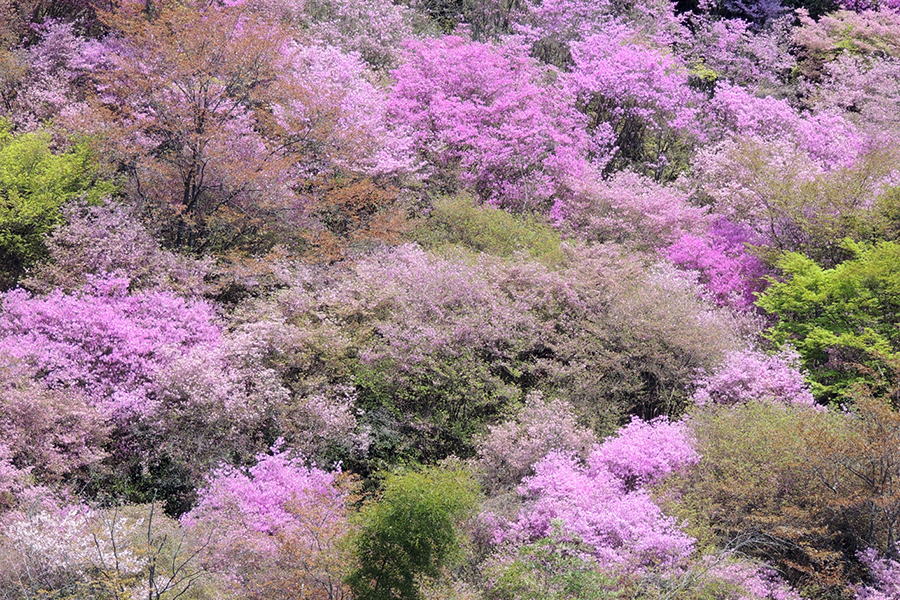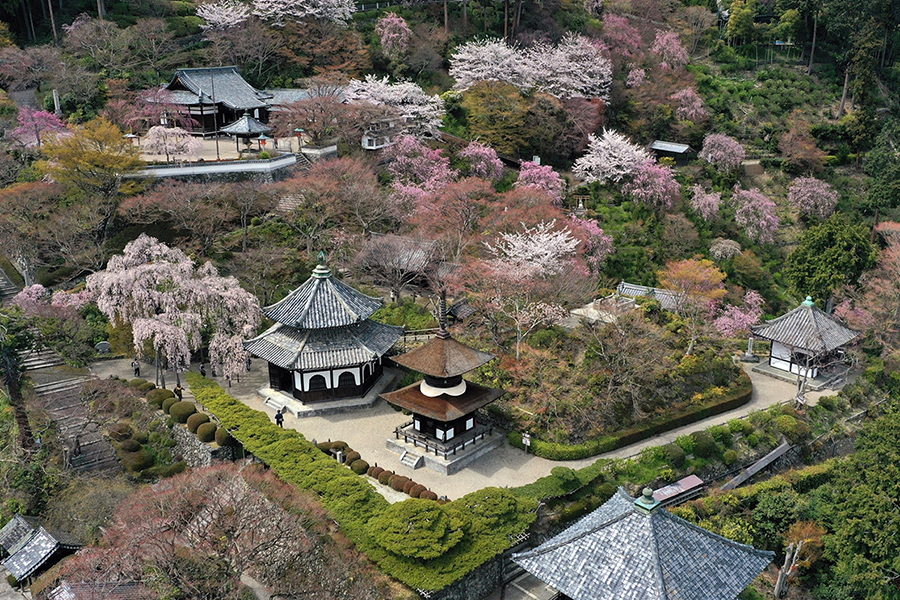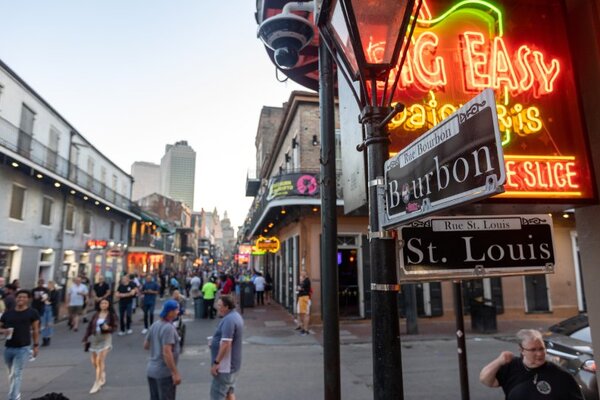How Kyoto intends to tackle its cherry blossom crowds
Japan’s brief, pink sakura season begins in late March, presenting unique challenges for Kyoto, the country’s most iconic springtime destination. Our writer learns about the plans to manage this busy period.
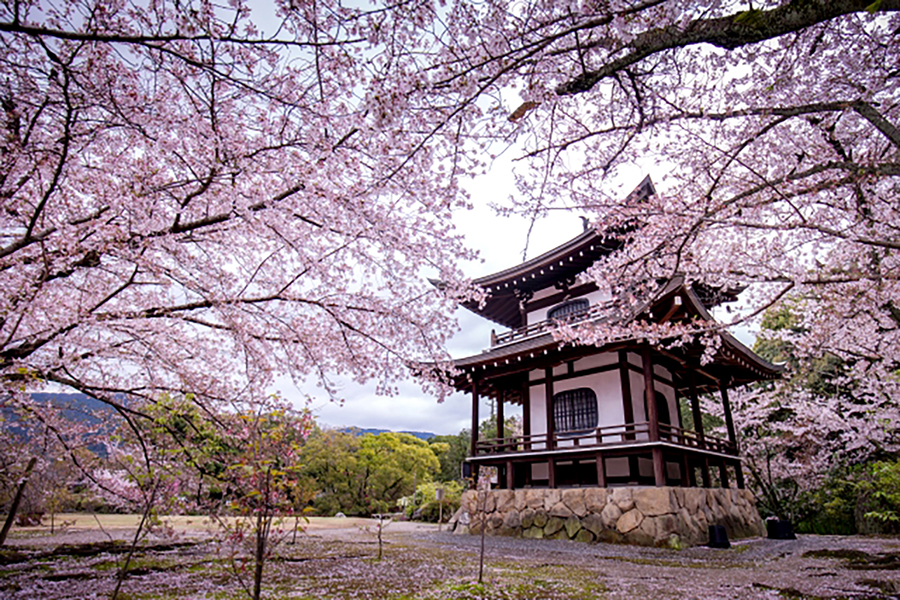
There’s no denying, Kyoto is pretty in pink. The ancient capital is the poster city for spring in Japan, with the beauty of its historic temples and shrines, gardens and traditional streets enhanced by pink cherry trees in full bloom.
According to the official cherry blossom forecast from Japan Meteorological Corporation, the cherry-blossom front will arrive around 20 March, with the first Yoshino cherry buds blooming on Shikoku island, before flowering in Kyoto around 24 March. The blossom lasts around 14 days – Kyoto’s busiest fortnight of the year.
Although cherry blossom is a Japan-wide phenomenon, it is to Kyoto that people flock to – to picture-perfect Sannenzaka, where an old cherry drapes photogenically over the path’s pretty machiya; to nearby Kiyomizu-dera, where pink blossoms fill the temple gorge; to Kinkaku-ji Golden Pavilion and its pond by framed by blooms; or to the Zen rock garden at Ryōan-ji, where blossom tumbles over the wall providing a pink pop in an otherwise monochrome dry landscape.
The lure of Kyoto in spring is irresistible for many, but this creates huge challenges for the small city whose population of 1.45 million was dwarfed by more than 50 million visitors annually over seven consecutive years pre-Covid, including around 4.5 million from overseas.
“Kyoto is an amazing place – it is the cultural capital of Japan – and everyone who goes to Japan will go to Kyoto,” says James Mundy, marketing manager at InsideJapan Tours. “These days, every month seems to be busy for Kyoto, but cherry blossom has always been peak, so you can expect popular hanami (cherry-blossom viewing) sites, such as Maruyama Park or the Philosopher’s Path, to be very busy.”
Indeed, in recent years, Kyoto has hit the headlines for overcrowding on buses and at star attractions, and for antisocial behaviour in its teahouse districts, where maiko (apprentice geisha) have been harassed for photographs. Such incidents put intense focus on the city’s efforts to balance the daily lives of Kyotoites with the needs of visitors, whose contribution to the local economy equals around 55% of the annual consumption spending of all Kyoto citizens.
“Kyoto City doesn’t believe in banning things but to work to create a more comfortable and pleasant atmosphere for tourists and locals,” says Kumiko Yoshioka, manager, Kyoto City Tourism & MICE, who is in charge of strategy for managing overtourism. “If visitors understand the customs of how Kyoto people live, they will have more respect and will act accordingly. Similarly, for Kyoto citizens – who have great pride in their city – it is vital they understand how important tourism is to Kyoto.”
With this in mind, Kyoto City Tourism developed the Kyoto Guidelines for tourists and businesses alike, inviting all parties to do their bit to make the city enjoyable for all. It encourages mutual understanding and cultural exchange to develop more harmony between residents and tourists.
In October 2023, the ‘Mind Your Manners’ element focused on visitor behaviour was updated on English-language leaflets, maps and posters, gently urging tourists to “be considerate [and] move quietly when exploring residential areas and temples”, to not “follow the crowd” and to “leave luggage behind” (the concurrent Hands Free Kyoto campaign asks tourists to deposit large luggage in storage lockers to keep them off the busy transport network).
The guidelines discourage littering and eating in the street and ask visitors not to block roads or smoke in restricted areas (with fines enforceable). In Gion, hand-painted wooden signs remind visitors not to bother maiko. This softly, softly approach has been positively received by visitors and local business.
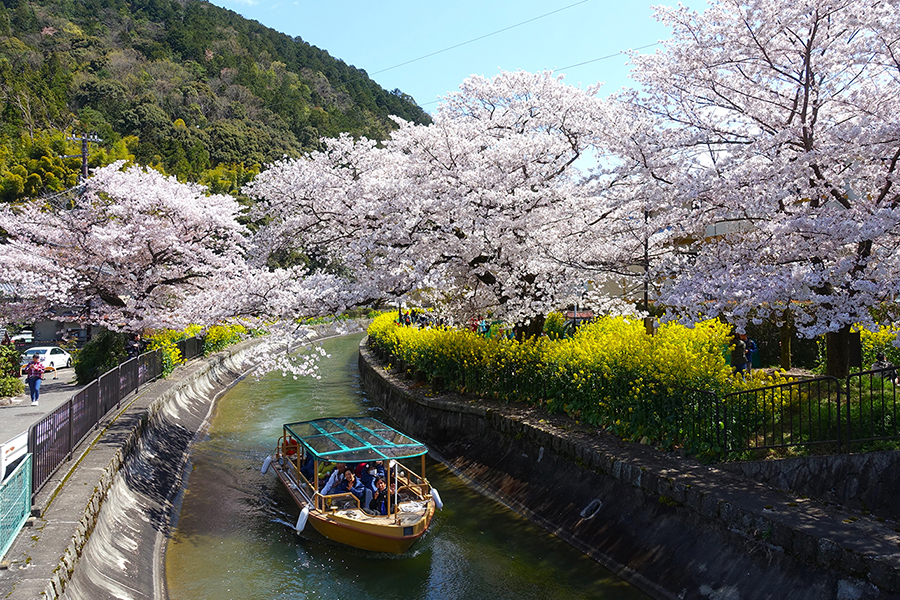
“Conduct and congestion are the two most important things we are focusing on; both take time to implement and to see the result,” Yoshioka continues, explaining that Kyoto City Tourism’s congestion strategy is focused on season, timing and place.
Spring and autumn are Kyoto’s busiest seasons, so long-term campaigns have been instigated to draw tourists in the quieter summer and winter months. These include special events and increasing the availability of experiential tours. The mid-January to mid-March off-season is the only time private vacation rentals, such as AirBnB, are permitted in Kyoto’s residential areas. For visitors planning travel, a Congestion Forecast, similar to Google Maps’ Popular Times, predicts the best days/time to visit key sites two months in advance.
On the ground, visitors are encouraged to explore popular locations in the mornings and evenings to alleviate mid-day congestion, while live webcams that indicate crowding are being trialled at key sites. An official, widely distributed sightseeing map features a list of temples and shrines that open early.
The frequency of regular bus services is expected to increase for cherry blossom season, and four temporary RakuRaku Line express routes are expected to operate between Kyoto Station and popular sites including Nijo Castle, Kinkaku-ji, Arashiyama and Ginkaku-ji, reducing transit times and reducing pressure on the regular bus network. The introduction of a new one-day bus and subway pass (¥1,100) should help reduce congestion on the buses by directing some visitors onto Kyoto’s two underground lines.
For locations like Kiyomizu-dera, which are busy all-day long (including during the extended cherry blossom hours), Kyoto City Tourism is urging visitors to venture into lesser-known, surrounding areas, such as Yamashina, with its tunnel of cherry trees along the Lake Biwa Canal. The Hidden Gems of Kyoto project champions this neighbourhood, as well as Fushimi (beyond the famous shrine), for its sake breweries and canals; Ohara, for temples and gardens; and Nishikyo, for bamboo groves that surpass Arashiyama for tranquillity.
“Japan’s cherry blossom season is wild compared to 10 years ago, but people do still tend have a nice time,” says David Peat, senior product executive at Audley Travel. “I would recommend that clients don’t go specifically to famous blossom spots but just enjoy the ambient cherry blossom that is all around.”
Visiting Japan during cherry blossom comes at a “significant cost”, he adds. “To mitigate that, we like to recommend clients catch the blossom at one end of the trip – so if you start your two-week trip in early March, you will catch the blossom by the end. Likewise, if you start in early April on the Golden Route, you will catch the end of the blossom.” Peat recommends Tohoku, in northern Japan, for crowd-free blossom, including Matsushima, for its views of the “Halong Bay of Japan”, and Kakunodate in Akita for its riverside cherries and proximity to the mountain hot spring town of Nyuto. “It is still knee-deep snow in April, so you can experience both in one day,” Peat enthuses. “That is an amazing Japan combination that you can’t find anywhere else.”
“There are plenty of places in Kyoto that are a bit quieter and that you can explore if you stay a bit longer,” advises Mundy. “There are also under-the-radar places countrywide that are not overrun but that offer some of that essence of Japan that has made Kyoto so popular – temples, traditional districts, artisan culture.” He highlights nearby Nara, or one of the many Japanese cities dubbed ‘Little Kyoto’, including Kakunodate, Kanazawa in Ishikawa, and Hagi in Yamaguchi prefecture.
“Pink blooms come out all over Japan,” he adds. “So there’s always the chance to capture the pink stuff, but also experience a region that people don’t often explore.”
For tour operators selling Japan, see TTG’s Travel Supplier Directory
Sign up for weekday travel news and analysis straight to your inbox
Kate Crockett
Supplier Directory
Find contacts for 260+ travel suppliers. Type name, company or destination.
